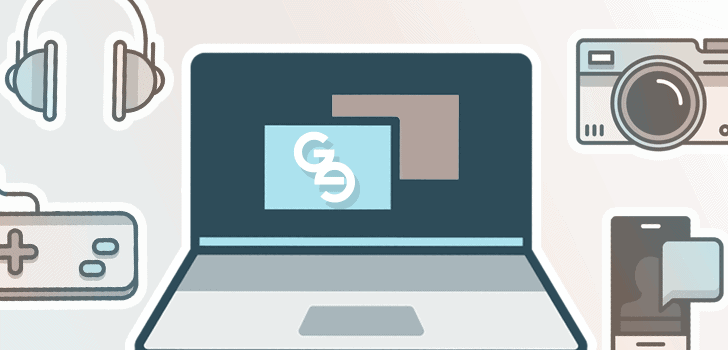If you’re devising a marketing campaign and are getting bogged down with different ideas, you may want to consider colour psychology. According to multiple scientific and psychological studies, each shade creates a different emotion in the viewer — from urgency to buy now, to trusting in a brand. With other experiments suggesting that colour can determine how long we can recall an offer or brand logo, it’s clear that being colour-savvy when designing a marketing campaign is essential.
Supplier of bollard signs , Where The Trade Buys, has created this interesting colour psychology guide to help brands make the most of their next marketing campaigns…
Colour perception in humans
Colour psychology is a complex but fascinating idea and there have been scientific studies into the connection between shades and sales that appear to show a strong correlation. According to a Canadian experiment, nearly 90% of snap decisions regarding consumer products are based solely on colour.
How about when you consider gender in marketing? A study published in the Journal of Retailing found that men believed savings were much greater in value if they was advertised in red rather than black, while the difference was much smaller among women. The imbalance of colour psychology between males and females was also apparent in the study, Colour Assignment. Although blue was popular across the board, this study found that purple was a second-favourite colour for women but the second-least favourite among men. Similarly, other studies on colour attractiveness found that softer hues are preferred by women, while bold shades were liked by men. Are you using the right hues for your main consumer?
What are you striving to achieve in your marketing campaign? Studies have shown that yellow is utilised to grab attention and should perhaps be the colour of choice in store windows, while red is most people’s key indicator of discount prices and ‘urgency’ and should be used on clearance sales posters for optimum effect. Also, both these shades are warm colours. According to an experiment, these are better at sticking in a viewer’s memory than cool colours (like blue and green). So, it might be good to use them on promotional ads to keep consumers thinking about your offer for longer, as well as your brand logo itself to ensure you come to mind when they next need a product or service you offer.
Considered merging two shads together? Another study found that contrasting shades also improved readability — essential if you want your ads to be seen by more people from a greater distance.
Not sure that colour psychology is true? Check out how some brands use certain shades…
Commercial use of colour
For years, it seems that companies have used particular colours depending on their personality, products or industry. According to research compiled by Kissmetrics, 85% of shoppers surveyed say colour is a primary reason for buying something. Also, it was found that colour boosts brand recognition by around 80%.
Colour can change how a consumer thinks about a business. Here are the emotions associated with each colour and examples of the successful brands that use them:
| Colour | Effect | Logo |
| Yellow | Optimism and youth | Chupa Chups and McDonalds |
| Green | Growth and relaxation | Starbucks and Asda |
| Pink | Romance and femininity | Barbie and Very |
| Purple | Creative and wise | Cadbury and Hallmark |
| Black | Power and luxury | Chanel and Adidas |
| Orange | Confidence and happiness | Nickelodeon and Fanta |
| Red | Energy and excitement | Coca Cola and Virgin Holidays |
| Blue | Trust and security | Barclays and the NHS |
Did Barclays choose blue to evoke trust and Starbucks opt for green to help customers relax? According to June Mcleod, author of Colour Psychology Today: “One of the greatest assets and one of the easiest ways to sway decision or attract an emotive response — or alienate a consumer — is through colour. Purple with Cadbury; Shell with Yellow; National Trust with Green — they all work and work wonderfully well.”
Eight out of ten people believe a shade helps us identify a company. If you want your customers to gain a sense of loyalty and familiarity with your brand, the colour should reflect your brand’s products, services and character.
Boosting your advertising strategy
When trying to reach consumers and boost your brand, colour is worth considering. Take beer company, Carlsberg, for example. The marketing team here worked to rebrand using colour with great success. Using white for its Carlberg Export packaging and changing its formerly green bottles to brown; the company achieved 10,000 new distribution points and a sales increase of 10% in the 12 weeks leading to summer in 2017.
Bear the below in mind during your marketing planning process:
- There are evidently some differences in how men and women perceive colour.
- Use red and yellow on your large print ads to increase the chances of catching the eyes of passers-by.
- Use opposite shades to improve text clarity — essential considering you have just seven seconds to make a bold first impression.
- Determine what you want consumers to think about your brand and choose a colour that reflects this.
Make 2018 your year to shine with the power of colour.
Sources:
http://journals.sagepub.com/doi/abs/10.1177/0258042X1103600206
https://www.sciencedirect.com/science/article/pii/S0022435913000031
https://neilpatel.com/blog/color-psychology/
https://www.ncbi.nlm.nih.gov/pubmed/2235253
https://www.ncbi.nlm.nih.gov/pmc/articles/PMC4347302/
https://www.businessinsider.com/only-7-seconds-to-make-first-impression-2013-4?IR=T
